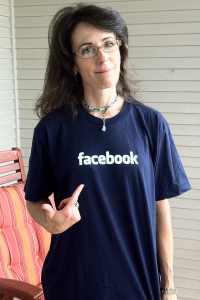“If you’re not paying for something, you’re not the customer; you’re the product being sold.”
–Andrew Lewis qtd in Eli Pariser’s Filter Bubble

My husband toured FB, and all I got was a new Friend List, new Subscribe and new "Privacy" controls.
Due Monday, Sept. 19 at 5PM posted to your blog (COMM 499 students will post to collective blog–see email for details), the first midterm is a case study of one aspect of Facebook. Mark Zuckerberg has obliged us by giving us a lot of new material, rolling out new tools that copy key elements of competitors Twitter and Google+. “Subscribe” permits asymmetrical relationships, just like Twitter: follow anyone you want without having to worry whether that person will “friend” you back. New friends lists, such as “smart lists” and user-controlled customizable lists grant Facebook users more nuance in deciding who sees what information they post or is posted about them.
In terms of leverage, there’s nothing that can touch Facebook’s 750 million subscribers. Google+, hailed by metrics company ComScore as “the fastest growing social network of all time” on August 3, 2011 tops out at 25 million users. If g+ has grown appreciably in the last six weeks, then it’s story missed by the well-known industry trackers Mashable, ArsTechnica, GigaOm and TechCrunch. That is to say: I doubt it.
We worked in class on close reading. I exhort you to choose three killer examples that let you tell a compelling story about Facebook. Case studies usually have a beginning, middle and end: a premise, evidence closely analyzed, and a conclusion. Remember this industry example we discussed in class.
In this case study, you may respond to one of four options.
1. Write about one element of Facebook that you generated in class with peers and ran by me for approval. Propose a hypothesis of how you think that element of FB affects (or will affect) other elements beyond FB: privacy, traceable personal data aggregation, brand messaging, our “persuasion profiles,” our offline social relationships.
2. Write about the new Subscribe and Friends Lists functions: they appear to give users more control over who sees aspects of our FB profiles. What are the advantages of this new functionality? What are the disadvantages? Look at the many different options for messaging: from the private message all the way out to wall posts and tags delivered to subscribers who are not necessarily one’s “friends.” Can you make a continuum of privacy or publicity? Does such control actually matter to individual users? To brands or other corporate entities? What about the idea that these privacy controls are a red herring: the real money to be made is in data aggregation, which these privacy controls will render more nuanced and possibly more candid (because people think they are acting privately.)
3. Examine one element in either the Ian Bogost piece (“A Professor’s View of Facebook”) or the BJ Fogg vids and relate it to the new Facebook. Stanford Prof. Fogg claims that Facebook is “the most persuasive technology” in human history. Look specifically at his video about Tagging in FB. Apply the three conditions to different scenarios. Do individuals respond differently to the psychological triggers than they might if they were managing public figures or businesses?
4. If you personally have managed a Facebook promotions campaign, describe the techniques you’ve learned for growing your brand’s (or your clients’) profiles. What are the metrics on your success? Do they reflect genuine brand penetration, or are the numbers misleading? How might you grow the business even further using the new tools? Is it possible that Facebook could be a “one-stop-shop” for social media? Can we now cut out Twitter and G+?
Useful Links
See the Linkroll page; scroll down for all kinds of links pertinent to this topic.




